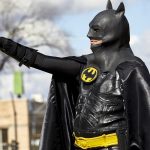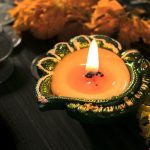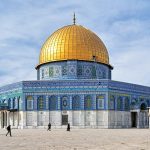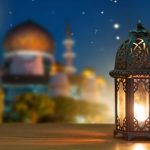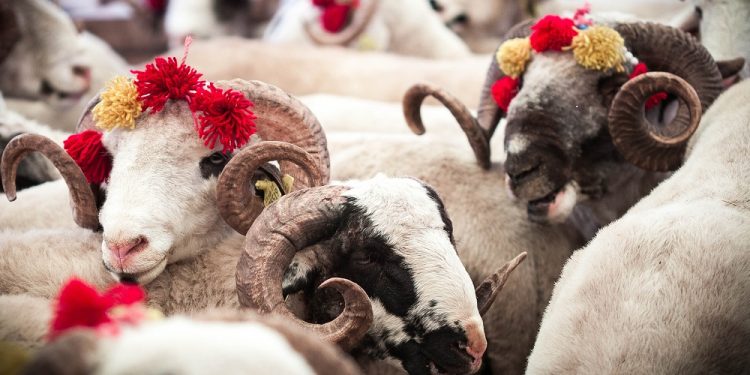
Eid al-Adha
Eid al-Adha is one of the two official Islamic holidays celebrated all over the world every year—the other official holiday being Eid al-Fitr. The name of this holiday translates literally to “Feast of the Sacrifice,” and it is also known by a number of other names, including Bakra Eid, Bakrid, Eid-e-Qurban, and Hari Raya Haji. This holiday honors the willingness of Ibrahim to sacrifice his son Ismael obediently as God had commanded him to do.
This holiday falls on the 10th day of Dhu al-Hijjah on the Islamic lunar calendar and lasts for a period of four days. Because of the differences between the Islamic lunar calendar and the Gregorian calendar, the day on which this holiday falls shifts from year to year on the Gregorian calendar. However, every year it starts approximately 11 days earlier than the year before.
The Origins of This Holiday
Ibrahim is the Arabic name for Abraham—a man who was ordered by God to sacrifice his son. In Islamic tradition, Abraham kept having vivid dreams that he was sacrificing his son Ismael to God. Because he kept having the same dream over and over again, Abraham came to understand that this was God’s command, and he would go on to tell his son about his dream. According to the Quran, Ismael said to his father to do what he was commanded to do.
As an act of faith and obedience to God, Abraham made preparations to sacrifice his son. As he began this prep work, Shaitan tried to tempt Abraham and his family by encouraging him to disobey God’s command. Abraham resisted, however, and drove the demon away by throwing pebbles at him. This is why stones are thrown at the symbolic pillars during Hajj rites, a practice called Stoning of the Devil.
Abraham was about to slaughter his son for the sacrifice when God intervened. God saw that Abraham was willing to sacrifice what was dear to him and honored both Abraham and Ismael. The angel Jibreel (also known as Gabriel) called out to Abraham and told him that he had fulfilled the revelations. The angel then sent Abraham a lamb from heaven to sacrifice instead of his son. All over the world, Muslims gather together to not only honor the devotion of Abraham but to commemorate the survival of Ishmael.
The Story of Abraham
This story isn’t just found in the Quran, however. Similar versions of the story can be found in both the Old Testament and the Torah as well. The three largest monotheistic religions have all begun with Abraham—a figure who is now considered to be the most influential person in all of history. Over 3 billion people in the world claim Abraham as the father of their religion.
Abraham was the son of Terah, and his birth name was Abram. He was born at the beginning of the second millennium BC in the capital of Mesopotamia, Ur. According to both Muslim and Jewish tradition, he was the son of an idol maker. One day he would go on to smash all of his father’s idols, except for one, in what would be a foreshadowing of his devotion to God.
Abraham’s family would end up leaving Ur and would travel northwest along the Euphrates River to the city of Haran. This is where he would settle and marry Sarai. At this time in Haran’s history, the city was one that practiced polytheism. When Abram was 75, he received the call from God to leave his home and follow God into a strange land. Abram took his wife, his nephew Lot, and his possessions and then left Haran. He moved south into the land of Canaan and settled temporarily in Shechem.
After suffering under a famine that forced him and his family to move temporarily to Egypt, and then having to endure trials and tribulations there, Abraham would eventually return to Canaan. After a disagreement over grazing land for the herds, Abraham allowed Lot to choose the land he would take. Lot took the fertile plains to the east—a land that included the cities of Sodom and Gomorrah. Abraham took the hills to the west.
In the Judaic and Christian traditions, God asks Abraham to sacrifice his son Isaac. However, according to the Islamic interpretation of the text, Ishmael is the son. In all stories, however, Abraham was asked by God to take his son to Mount Moriah and sacrifice him. Abraham was just about to sacrifice his son when God told him to stay his hand. A ram then appeared out of a bush (or in some versions of the story was delivered by the angel Gabriel), and Abraham and his son slew the ram as an offering to God.
Eid al-Adha Observances
This holiday marks the end of Hajj—an annual Islamic pilgrimage to Mecca, Saudi Arabia. This 5-day pilgrimage is undertaken by every Muslim who is financially and physically able to undertake this obligation. This pilgrimage is believed to cleanse a person’s soul of all its sins. It’s also supposed to instill a sense of brotherhood and equality among everyone.
Stoning of the Devil
Stoning of the Devil is part of the annual Islamic Hajj pilgrimage that occurs every year around Mecca in Saudi Arabia. During this ritual, Muslims who have made the pilgrimage throw pebbles at three walls called Jamaraat in the city of Mina just outside of Mecca. This is a symbolic reenactment of Abraham’s hajj—in which he stoned three pillars representing the temptation to disobey the orders of God.
On the 10th day of the month of Dhu al-Hijjah on Eid al-Adha, pilgrims have to strike one of the three jamraat with seven pebbles. When this is done on the day of Eid, every pilgrim must then cut or shave their hair. On each of the following two days of this pilgrimage, a person has to hit each of the three walls with seven pebbles—moving from east to west. That means that the pilgrim will need at least 49 pebbles or more if they miss some of their throws.
The Start of Morning Prayers
Most Muslims will begin the start of Eid al-Adha by performing a few extra prayers in the morning. At the mosque, the Eid al-Adha prayers are offered. This prayer is done any time after the sun has completely risen, and just before entering the period for the Zuhr prayers on the 10th day of Dhu Al-Hijjah. If there is a natural disaster or another event that would make it impossible to perform the prayers, then they may be delayed to the 11th of Dhu al-Hijjah, or if that’s not possible, then to the 12th of Dhu al-Hijjah.
Although the participation of women in the prayer congregation may vary from one community to the next, Eid al-Adha prayers must be offered in the congregation. Each prayer congregation has two prescribed movements or supplications known as raka’at, and seven Takbir. For Shia Muslims, no call to prayer is pronounced for the two Eid al-Adha prayers. Instead, the salat is followed by the sermon by the Imam.
Sacrificing an Animal
The main event that is held on this day is the sacrificing of an animal. This is to mirror the same sacrifice that Abraham made to God after Gabriel gave him the lamb from heaven. The animal that is to be sacrificed must be something that Muslims are allowed to eat. This can be a goat, sheep, a cow, or even a camel. Another thing to point out is that this ritual sacrifice only needs to be performed by people who can afford to slaughter an animal in this way.
In some parts of the Muslim world, special markets are set up so that people can buy the animals they want for the animal sacrifice on this day. During the COVID-19 pandemic, some areas made changes to how they sold animals in accordance with restrictions on public gatherings. For example, in countries such as Bangladesh and India, animals were sold online to people to limit people’s exposure to the virus.
The purpose of the animal sacrifice on Eid al-Adha isn’t about shedding blood just to satisfy God. Instead, it’s about devotees sacrificing something they love to show their devotion to Allah. This means that the sacrifice doesn’t have to be an animal, especially if the participant can’t afford to make such a sacrifice. A person can also give up money or their time working on community service. According to the Quran, the blood or flesh of the animal doesn’t reach Allah; instead, it’s the devotion of the devotees that rises to heaven.
The Distribution of the Sacrificial Animal
After the animal is sacrificed, it’s a requirement that the meat is distributed to others. The meat of the animal is divided into three parts. The first part is for the person sacrificing it and their immediate family. The second part is for extended family and friends, and the third part is divided up for those who are in need.
There are also a number of Muslim charities that Muslims can pay to have them perform remote animal sacrifices. These charities will then distribute the meat to underprivileged groups including not only the elderly but also disabled people and refugees.


